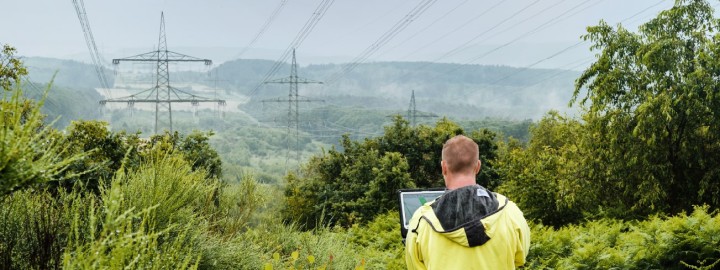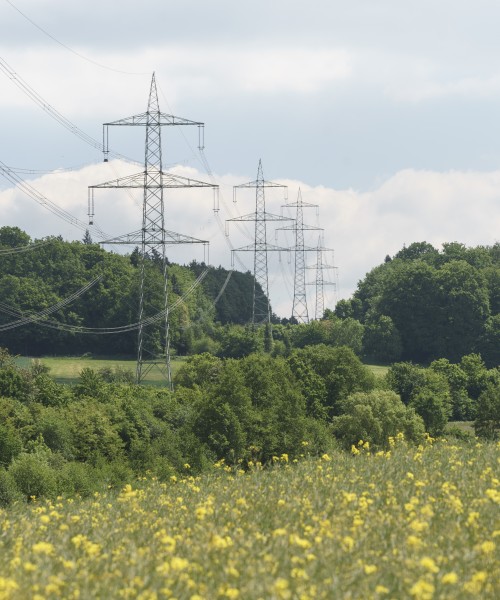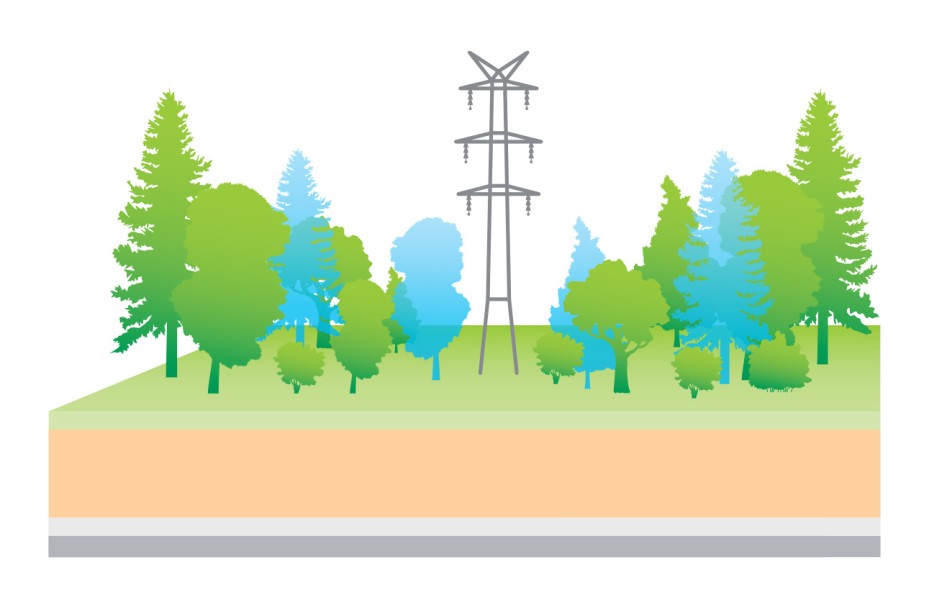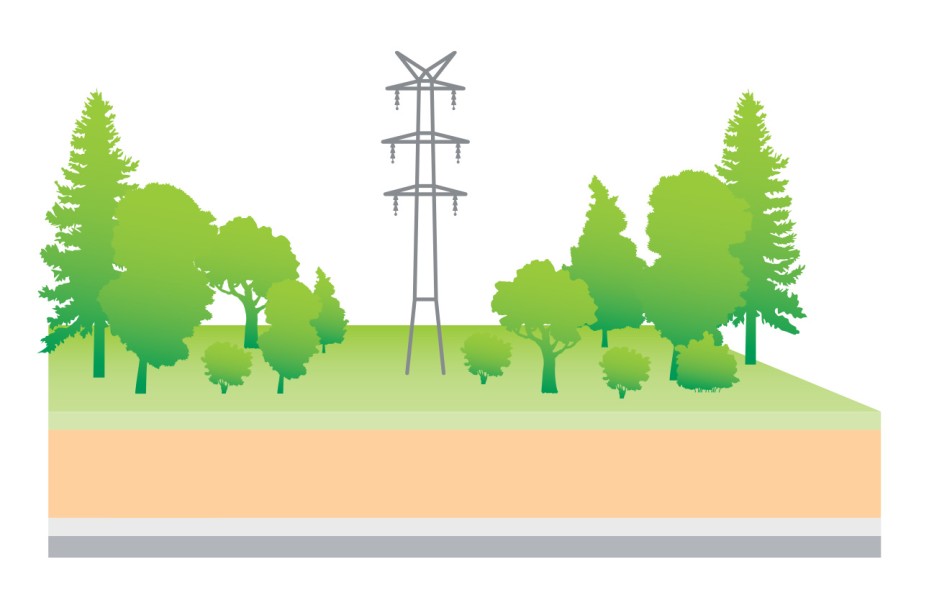INTEGRATED VEGETATION MANAGEMENT

Our power lines run for long distances through open landscapes, forests and meadows. They are the backbone of the power supply - and at the same time our power lines are habitats for numerous animal and plant species. At Amprion, we see nature conservation and environmental protection as an important part of our social responsibility. That is why we have been focussing on effective integrated vegetation management (IVM) for several decades.
Our aim is to safeguard the safe transmission of electricity while minimising the impact on nature and the landscape and nurturing useful biotope structures in the area around our lines. We therefore consistently organise the necessary route maintenance measures according to ecological aspects - and also support local species and area protection projects. We are thus taking on a pioneering role in the field of nature and landscape conservation.

"Integrated vegetation management is a route maintenance concept for the safe operation of above-ground power line routes, taking ecological aspects into account.
The objectives are ecologically sensible maintenance and development approaches adapted to the respective locations in consultation with the owners, authorities, etc. These create stable biotope structures that can be maintained in the long term through extensive maintenance. These create stable biotope structures that can be maintained in the long term through extensive care.
The concept combines the sustainability goals of ecology, economy and society, whereby the route maintenance is associated with positive changes for occurring animal and plant species and the landscape."
Principles, possibilities and limits of integrated vegetation management; position of the transmission system operators TenneT, 50Hertz, TransnetBW and Amprion; 2023
ROUTE MAINTENANCE IN THE PAST AND TODAY
To prevent trees or other woody plants from growing too close to the conductor ropes, these areas must be maintained. Here we distinguish between two basic types of maintenance: conventional management and integrated vegetation management.
IN THE PAST: INFREQUENT AND INTENSIVE
In the past, infrequent but intensive maintenance was carried out. This involved the complete removal of trees and shrubs from the route - creating a swathe.


TODAY: MORE FREQUENT AND EXTENSIVE
In order to create sufficient distance between the conductor ropes and the vegetation, we intervene more frequently these days. We cut back trees and bushes as carefully and proactively as possible. In this way, for example, stepped forest edge structures can be created in overhead lines crossing forests.


THE BASIC PRINCIPLE
The maintenance of our power line routes and the protection of nature go hand in hand for us. We follow the principle of pruning trees and shrubs as selectively, carefully and proactively as possible. Our maintenance work is generally aimed at creating a sufficient distance between the conductor ropes and the vegetation. We therefore remove fast-growing tree and shrub species and nurture slow-growing ones.
We also take spatial differences into account. At the edge of the protected zones and near the mast, trees and shrubs can grow significantly higher than in the centre of the span, which can create a smooth transition period to the adjacent commercial forest. The stepped, stable and structurally rich forest edges offer varied habitats for a variety of species.
Compared to conventional line maintenance, the IVM concept shows that nature conservation and line operation complement each other. We use these measures to continuously and extensively maintain our routes in order to create sustainable biotope structures and nurture biodiversity. We are also successful with our maintenance concept along routes that cross forests. Among other things, this creates stable and structurally rich forest edges that provide habitats for animal and plant species.
IVM PLANS: CHECKED AND OPTIMISED
The basis for the realisation of this concept is formed by the so-called integrated vegetation management plans (IVM plans), which are created and regularly updated for all relevant line sections. The areas of our overhead line routes are mapped in these plans and biotope types and maintenance objectives are shown. This also includes areas that are part of protected areas. The planning for route maintenance, which is divided into maintenance units, is carried out in close annual consultation with internal and external experts, for example from the fields of biology, nature conservation, forestry and the authorities. We enter into individual dialogue with local associations and landowners in order to check and optimise the measures on site.
SUSTAINABILITY ON THREE LEVELS
We have been pursuing the principle of sustainability on the following three levels in route maintenance for several decades:
1. Ecological sustainability
Ecological sustainability aims to conserve natural resources. There are very different landscapes in Amprion's grid area. These are taken into account to a high degree in integrated vegetation management: Although Amprion works according to standardised maintenance principles, the individual measures are individually adapted to the respective local conditions. This means that large-scale clear-cutting is avoided as far as possible in IVM. This avoids damage to ecosystems and instead nurtures biodiversity in the long term by creating valuable biotope structures.
2. Economic sustainability
Economic sustainability calls for sustainable management, and not just with limited resources. This is nurtured by the IVM: The targeted reduction of the growth rate of woody plants, where technically and ecologically justifiable, enables a cost-efficient maintenance rhythm.
3. Social sustainability
Social sustainability puts people at the centre. IVM combines local action and network-wide thinking: for example, Amprion prefers to use local maintenance companies for route maintenance. These are essential for IVM because they know the local conditions and special features and act accordingly. We also coordinate the measures with the authorities and nature conservation organisations.